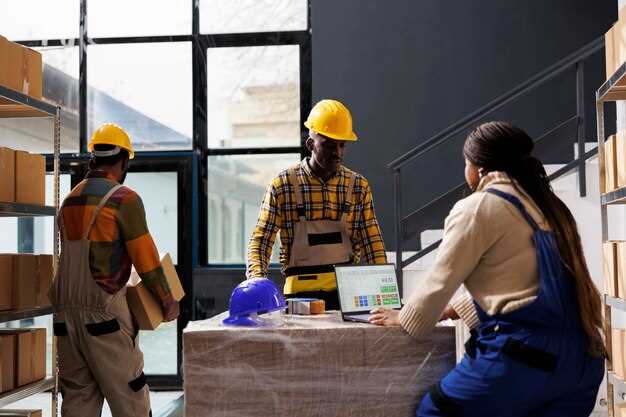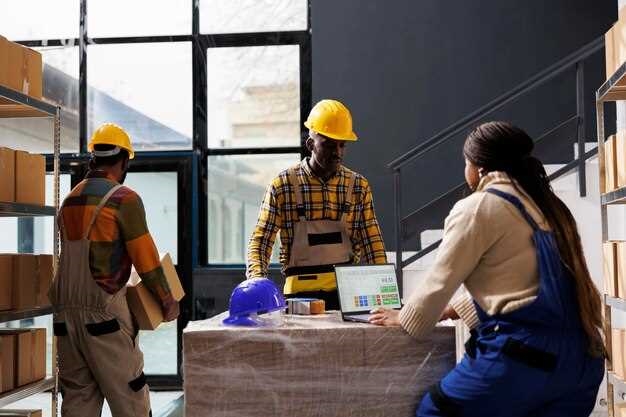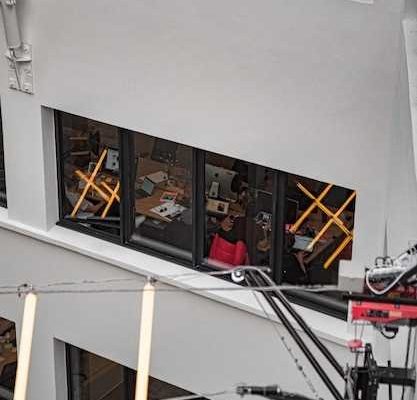
In the realm of commercial real estate, the consistent care and maintenance of properties play a pivotal role in ensuring their longevity and functionality. The regular upkeep of these establishments is not merely a matter of aesthetics, but rather a fundamental aspect of their overall performance and value. By implementing a proactive approach to property maintenance, businesses can safeguard their investments, enhance operational efficiency, and create a favorable environment for both employees and customers.
One of the key reasons why regular maintenance is crucial for commercial properties is its ability to prevent potential issues from escalating into major problems. By addressing minor repairs and maintenance tasks promptly, property owners can nip potential hazards in the bud and avoid costly and time-consuming repairs in the future. This proactive approach not only saves businesses from unexpected expenses but also ensures the uninterrupted operation of their premises, minimizing disruptions and maximizing productivity.
Moreover, regular maintenance goes beyond the surface-level improvements and extends to the underlying systems and infrastructure of commercial properties. From electrical and plumbing systems to heating, ventilation, and air conditioning (HVAC) units, these essential components require periodic inspections and servicing to function optimally. By prioritizing regular maintenance, businesses can identify and rectify any potential issues before they escalate, thereby prolonging the lifespan of their property’s vital systems and reducing the risk of unexpected breakdowns.
Enhancing Safety and Security
Ensuring the well-being and protection of individuals within commercial properties is of utmost importance. By implementing effective safety and security measures, businesses can create a secure environment that promotes peace of mind for employees, customers, and visitors.
One key aspect of enhancing safety and security is the installation of surveillance systems. These systems utilize advanced technology to monitor and record activities within the premises, deterring potential criminal activities and providing valuable evidence in case of any incidents. Additionally, access control systems can be implemented to restrict entry to authorized personnel only, minimizing the risk of unauthorized access and ensuring the safety of sensitive areas.
Regular inspections and maintenance of fire safety equipment are vital in preventing and minimizing the impact of fire emergencies. Fire alarms, sprinkler systems, and fire extinguishers should be regularly tested and serviced to ensure their proper functioning. Adequate training and drills should also be conducted to educate employees on fire safety protocols and evacuation procedures.
Another important aspect of enhancing safety and security is the implementation of proper lighting systems. Well-lit areas not only deter potential criminals but also provide a sense of security for individuals within the premises. Outdoor lighting should be strategically placed to eliminate dark spots and increase visibility, while indoor lighting should be sufficient to prevent accidents and ensure a safe working environment.
Furthermore, regular maintenance of the property’s physical infrastructure is crucial in preventing accidents and ensuring the safety of occupants. This includes inspecting and repairing damaged walkways, staircases, and handrails, as well as maintaining proper signage for emergency exits and hazardous areas. Adequate maintenance of elevators and escalators is also essential to prevent malfunctions and accidents.
| Benefits of Enhancing Safety and Security: |
|---|
| – Increased employee productivity and morale |
| – Enhanced reputation and trust among customers |
| – Reduced liability and insurance costs |
| – Prevention of theft and vandalism |
| – Compliance with safety regulations and legal requirements |
In conclusion, prioritizing safety and security in commercial properties is essential for the well-being of individuals and the overall success of businesses. By implementing effective measures such as surveillance systems, fire safety protocols, proper lighting, and regular maintenance, businesses can create a secure environment that fosters trust, productivity, and peace of mind.
Extending the Lifespan of the Property

Enhancing the longevity of a commercial property is a crucial aspect that contributes to its overall value and success. By implementing effective strategies and practices, property owners can ensure that their investment remains in optimal condition for an extended period. This section explores various methods and approaches to extend the lifespan of commercial properties, focusing on proactive measures and regular upkeep.
1. Implementing Preventive Maintenance
One of the key strategies for extending the lifespan of a commercial property is to adopt a proactive approach through preventive maintenance. This involves conducting regular inspections, identifying potential issues, and addressing them promptly. By identifying and resolving minor problems before they escalate, property owners can prevent major damages and costly repairs in the long run.
2. Regular Cleaning and Upkeep
Maintaining a clean and well-maintained commercial property is essential for its longevity. Regular cleaning, both internally and externally, helps prevent the accumulation of dirt, debris, and other damaging elements. This includes routine cleaning of floors, windows, walls, and other surfaces, as well as regular maintenance of landscaping and outdoor areas.
Additionally, it is important to ensure that all equipment and systems within the property are regularly serviced and maintained. This includes HVAC systems, electrical systems, plumbing, and other essential components. Regular inspections and maintenance of these systems can help identify any potential issues and ensure their proper functioning, thereby extending their lifespan.
3. Investing in Quality Materials and Construction
The choice of materials and construction methods used in the initial development of a commercial property plays a significant role in its long-term durability. Investing in high-quality materials and construction techniques can significantly extend the lifespan of the property. This includes using durable building materials, implementing proper insulation, and ensuring structural integrity.
Furthermore, regular assessments and evaluations of the property’s condition can help identify any areas that may require reinforcement or improvement. By addressing these issues promptly, property owners can prevent further deterioration and extend the overall lifespan of the property.
- Regular inspections and maintenance
- Proactive approach through preventive maintenance
- Regular cleaning and upkeep
- Investing in quality materials and construction
By implementing these strategies and practices, property owners can effectively extend the lifespan of their commercial properties, ensuring their long-term success and value.
Improving Energy Efficiency
Enhancing energy efficiency is a crucial aspect of optimizing the performance and sustainability of commercial properties. By implementing measures to reduce energy consumption and enhance resource utilization, businesses can not only reduce their environmental impact but also achieve significant cost savings.
One effective strategy for improving energy efficiency is through the installation of energy-efficient lighting systems. By replacing traditional incandescent bulbs with energy-saving alternatives such as LED lights, businesses can significantly reduce their electricity consumption. Additionally, implementing motion sensors and timers can further optimize energy usage by automatically turning off lights in unoccupied areas.
Another area where energy efficiency can be enhanced is through the proper insulation of commercial properties. By ensuring that buildings are well-insulated, businesses can minimize heat loss during colder months and reduce the need for excessive heating. Similarly, effective insulation can prevent cool air from escaping during warmer months, reducing the reliance on air conditioning systems.
Furthermore, regular maintenance of heating, ventilation, and air conditioning (HVAC) systems is essential for improving energy efficiency. Properly maintaining HVAC systems ensures that they operate at their optimal level, reducing energy wastage and prolonging their lifespan. Regular cleaning and filter replacement can also improve air quality and prevent the accumulation of dust and debris, which can hinder system performance.
Additionally, businesses can consider investing in energy-efficient appliances and equipment. From energy-efficient refrigerators to high-efficiency HVAC systems, upgrading to more sustainable options can significantly reduce energy consumption. Furthermore, businesses can explore the use of renewable energy sources, such as solar panels or wind turbines, to generate clean and sustainable power for their operations.
Lastly, educating employees about energy-saving practices and encouraging their active participation can contribute to improved energy efficiency. Simple actions like turning off lights when not in use, utilizing natural light whenever possible, and properly managing temperature settings can collectively make a significant difference in energy consumption.
| Benefits of Improving Energy Efficiency: |
|---|
| 1. Cost savings through reduced energy consumption |
| 2. Minimized environmental impact |
| 3. Enhanced sustainability and corporate social responsibility |
| 4. Improved indoor air quality |
| 5. Prolonged lifespan of equipment and appliances |
Enhancing the Aesthetic Appeal
Creating an appealing visual impression is crucial for commercial properties. The way a property looks can greatly influence the perception of potential clients and customers. By focusing on enhancing the aesthetic appeal, businesses can create a welcoming and professional environment that leaves a lasting positive impression.
Creating a Welcoming Atmosphere
One of the key aspects of enhancing the aesthetic appeal of a commercial property is to create a welcoming atmosphere. This can be achieved through careful selection of colors, lighting, and decor. By choosing warm and inviting colors, such as earth tones or soft pastels, businesses can create a comfortable and inviting space. Proper lighting is also essential, as it can highlight the key features of the property and create a pleasant ambiance.
Attention to Detail
Attention to detail is another important factor in enhancing the aesthetic appeal of commercial properties. Small touches, such as well-maintained landscaping, clean windows, and polished surfaces, can make a significant difference in the overall appearance. Regular maintenance and cleaning routines should be implemented to ensure that every aspect of the property is well-maintained and visually appealing.
Furthermore, incorporating elements of branding and design that align with the business’s identity can help create a cohesive and visually appealing environment. This can include using the company’s logo and colors in signage, furniture, and other decorative elements.
In conclusion, enhancing the aesthetic appeal of commercial properties is vital for creating a positive impression on clients and customers. By focusing on creating a welcoming atmosphere and paying attention to detail, businesses can create a visually appealing environment that reflects their brand and values.
Minimizing Repair Costs
Reducing expenses associated with repairs is a crucial aspect of managing commercial properties effectively. By implementing proactive measures and prioritizing preventative maintenance, property owners and managers can minimize the need for costly repairs and ensure the longevity of their assets.
One key strategy for minimizing repair costs is to regularly inspect and maintain the various systems and components of the property. This includes conducting routine checks on electrical, plumbing, and HVAC systems, as well as inspecting the structural integrity of the building. By identifying and addressing potential issues early on, property owners can prevent minor problems from escalating into major repairs that can be both time-consuming and expensive.
Another effective way to minimize repair costs is to establish a comprehensive maintenance schedule. This involves creating a detailed plan that outlines the frequency and scope of maintenance tasks for different areas of the property. By adhering to this schedule and conducting regular maintenance activities such as cleaning, lubricating, and replacing worn-out parts, property owners can prevent premature deterioration and extend the lifespan of their property’s components.
Furthermore, investing in high-quality materials and equipment can significantly reduce the need for repairs. By opting for durable and reliable products, property owners can minimize the risk of frequent breakdowns and replacements. While the initial cost may be higher, the long-term savings in repair expenses make it a worthwhile investment.
Lastly, fostering open communication with tenants and addressing their concerns promptly can help prevent minor issues from escalating into major repairs. By promptly addressing maintenance requests and conducting regular inspections, property owners can identify and resolve problems before they worsen, saving both time and money.
In conclusion, minimizing repair costs is essential for the successful management of commercial properties. By implementing proactive maintenance strategies, adhering to a comprehensive maintenance schedule, investing in quality materials, and maintaining open communication with tenants, property owners can effectively reduce expenses associated with repairs and ensure the long-term profitability of their assets.
Ensuring Compliance with Regulations
Adhering to regulations is a crucial aspect of maintaining commercial properties. It involves ensuring that all necessary guidelines and requirements set by governing bodies are met. Compliance with regulations not only ensures the safety and well-being of occupants but also protects the reputation and legal standing of the property owner or manager.
Understanding the Regulatory Landscape
Complying with regulations requires a comprehensive understanding of the regulatory landscape. This includes staying updated on local, state, and federal laws that govern various aspects of commercial properties, such as building codes, fire safety regulations, accessibility requirements, and environmental standards. It is essential to be aware of any changes or updates to these regulations to ensure ongoing compliance.
Implementing Proactive Measures
Proactive measures play a vital role in ensuring compliance with regulations. This involves conducting regular inspections and assessments to identify any potential violations or areas of improvement. By addressing these issues promptly, property owners can prevent costly penalties, legal disputes, and reputational damage. Implementing preventive maintenance programs and establishing clear protocols for reporting and addressing compliance issues can help maintain a proactive approach.
- Regularly inspecting the property for any safety hazards or code violations
- Maintaining accurate records of inspections, repairs, and maintenance activities
- Training staff members on compliance requirements and best practices
- Engaging with regulatory agencies and seeking guidance when needed
By taking these proactive measures, property owners can demonstrate their commitment to compliance and create a safe and secure environment for occupants.
In conclusion, ensuring compliance with regulations is a fundamental responsibility for commercial property owners and managers. It requires a thorough understanding of the regulatory landscape and the implementation of proactive measures to address any potential violations. By prioritizing compliance, property owners can protect their investments, maintain a positive reputation, and provide a safe environment for all stakeholders involved.



